Create a professional CV now!
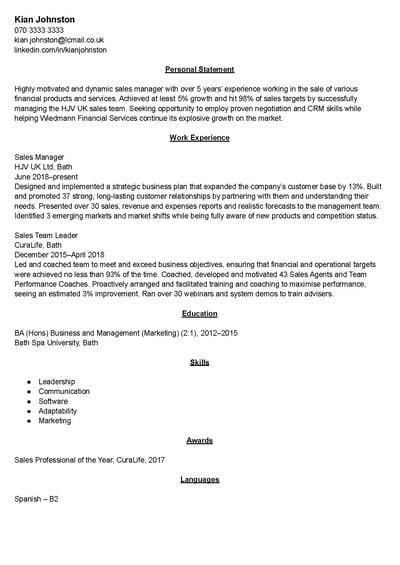 NO
NO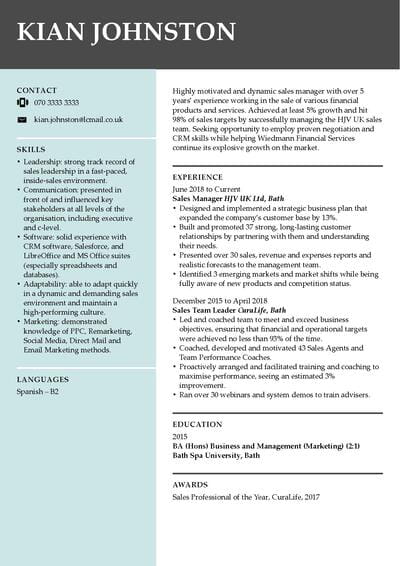 YES
YESLast updated on 13 November, 2025
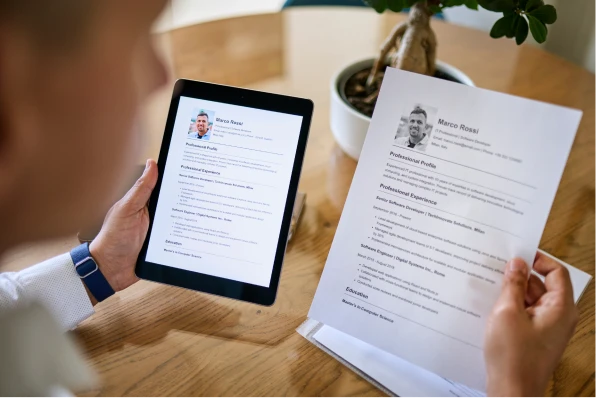
The right CV outline will have a huge impact on your CV as a whole. And as it affect your CV, it also affects your chances of getting a job interview and, with that, a job.
A lot depends on how you outline your CV. Luckily, this article is here to help you choose the right CV format and then learn how to outline a good CV around that.
In this guide, you'll find a CV outline better than nine out of ten out there. We'll also equip you with expert tips and examples for a compelling CV outline in the UK.
Create an effective CV in minutes. Choose a professional CV template and fill in every section of your CV in a flash using ready-made content and expert tips.
Create a professional CV now!
 NO
NO YES
YESWe created the sample on the right using our builder. See other good CV examples like this one.
Looking for other guides on CV writing? Check these ones:
Kian Johnston
070 3333 3333
kian.johnston@lcmail.co.uk
linkedin.com/in/kianjohnston
Personal Statement
Highly motivated and dynamic sales manager with over 5 years’ experience working in the sale of various financial products and services. Achieved at least 5% growth and hit 98% of sales targets by successfully managing the HJV UK sales team. Seeking opportunity to employ proven negotiation and CRM skills while helping Wiedmann Financial Services continue its explosive growth on the market.
Work Experience
Sales Manager
HJV UK Ltd, Bath
June 2018–present
Sales Team Leader
CuraLife, Bath
December 2015–April 2018
Education
BA (Hons) Business and Management (Marketing) (2:1), 2012–2015
Bath Spa University, Bath
Skills
Awards
Sales Professional of the Year, CuraLife, 2017
Languages
Spanish – B2
Now that’s the right way to write a CV! Let’s see what the ingredients are.
No single decision will affect how you outline your CV more than your choice of a CV format. If you’re applying for a university position (teaching and/or research), then the academic CV format is for you. Otherwise, you have three main options from which to choose, depending on your background and needs.
Your options are a (reverse-)chronological (or traditional) CV format, a skills-based (or functional) CV format, and a combination or hybrid of the two. A chronological format is by far the most common and the one to which you should always default. It’s with this format that recruiters are most familiar.
It’s also what ATSs (Application Tracking Systems) are set-up to handle most readily. A chronological format is actually written in reverse-chronological order and puts the spotlight on your work history, with only a brief rundown of your skills. This article assumes a chronological CV format.
People who have worked primarily on a freelance basis or bounced from gig to gig might be better off using a skills-based format. As the name suggests, a skills-based CV highlights and elaborates upon your skills first and foremost, with only a cursory rundown of your work history. Recruiters don’t love it, though.
Career changers, including military personnel transitioning back into civilian life, can also benefit from a combination CV format. It’s closer in structure to a traditional, reverse-chronological format, making it more palatable to recruiters and applicant tracking systems alike.
A strong CV summary will convince the recruiter you’re the perfect candidate. Save time and choose a ready-made personal statement written by career experts and adjust it to your needs in the LiveCareer CV builder.
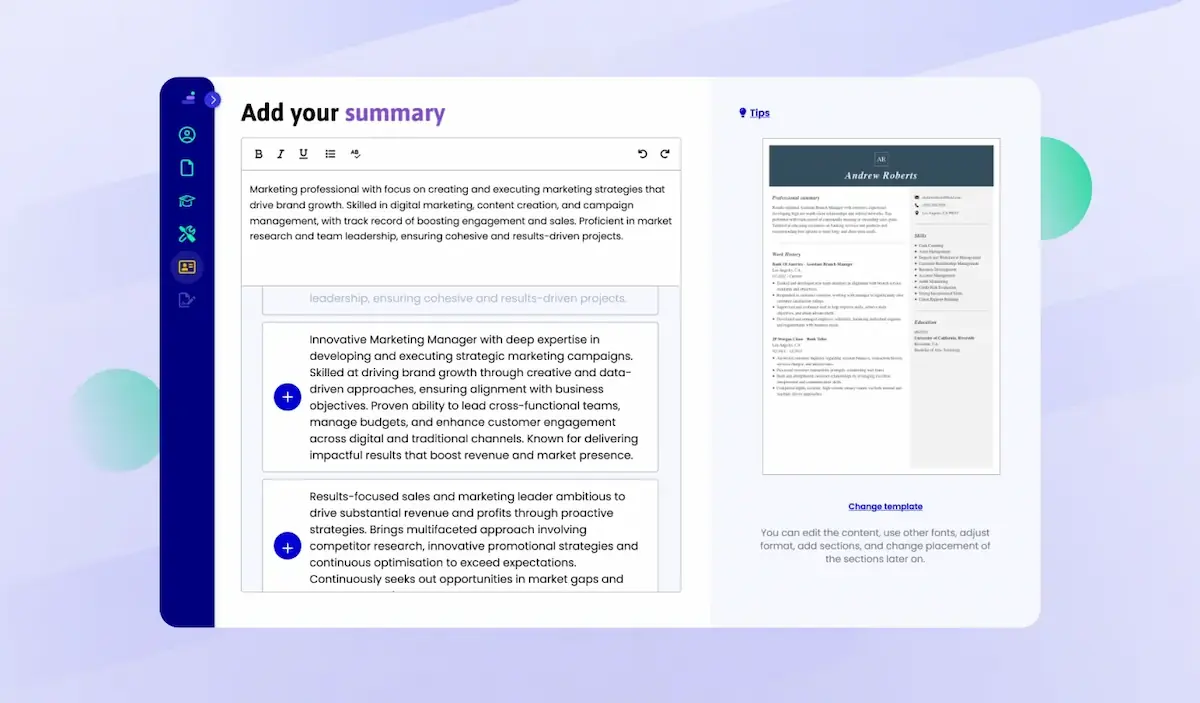
Other than your personal details—which just sit there for later reference—your personal statement is the first substantial element of your C.V. outline. Use it to grab the recruiter’s attention by introducing yourself, showing what you have to offer, and describing how your goals align with the company’s.
State how much experience you have and where (what industries, specialisations or niches) you gained that experience. Describe what benefits you managed to bring to your current or previous employer. This will make it clear to the recruiter what your new employer can expect from you if you’re hired.
Write up your achievement by taking a single sentence to describe an action you took and how your employer benefited from that action. Briefly characterise the context in which you acted if necessary—such actions are often taken in response to a problem or challenge. Quantify everything you can.
Show that your goals line up with the company’s stated goals simply by focusing on what it is that you hope to be able to achieve for the company. Perform some background research to find out what it is that it claims to be striving after. Align your goal accordingly. Don’t lie in your CV, but do shift your focus to the company.
Get past ATS algorithms by mentioning the name of the company and the position for which you’re applying as it appears in the job advert. Try to mirror the keywords used in the job advert in your personal statement, but don’t force it. If you can manage it by substituting synonyms, then do so.
There’s a lot happening in a well-structured personal statement, but the whole thing should only be 3–4 sentences or 50–150 words long. The personal statement should come first in your CV plan, but write it last. You’ll be able to do a much better job after you’ve prepared your job descriptions (that’s why it’s also knowns as a CV summary).
Highly motivated and dynamic sales manager with over 5 years’ experience working in the sale of various financial products and services. Achieved at least 5% growth and hit 98% of sales targets by successfully managing the HJV UK sales team. Seeking opportunity to employ proven negotiation and CRM skills while helping Wiedmann Financial Services continue its explosive growth on the market.
The chronological CV format definitely puts your work history in the limelight. Make sure it’s structured properly, helping your reader get a sense of the big picture of your working life while being able to jump easily from job to job. Use the following template to create a subheading for each job description:
[Job Title]
[Company Name, Location]
[Dates of Employment]
Add up to six bullet points under each subheading. Each bullet point you add should contain a single achievement from that job. You can use something like the APR (Action-Problem-Result) method to structure each achievement. Remember to quantify everything you can, benefits to your employer first and foremost.
If you’re writing your first CV and looking for information on how to outline a CV without any work experience, then first of all focus on any internships, placement work (belongs on a CV, too), and volunteer work you’ve done. If you don’t have any experience at all, then consider writing a student CV instead.
Sales Manager
HJV UK Ltd, Bath
June 2018–present
Sales Team Leader
CuraLife, Bath
December 2015–April 2018
The education section is a part of each and every CV structure for a reason. Not every job has education requirements, but your education is always an important part of how to structure a good CV. Make sure yours is clear and complete without going into unnecessary detail—less is more here.
Detail your education in reverse-chronological order, meaning that you start from the most recent and work your way back from there. Include your high school education only if you don’t have a university degree. You can safely skip it if you have a degree or other tertiary qualification and some work experience.
Use the following template for both university degrees and other tertiary qualifications:
[Degree Type] [Degree Name](Degree Class), [Years Attended]
[Institution Name], [Institution Location]
Use the following templates to detail your high school education:
A-levels: [Subject Name 1], [Subject Name 2], [Subject Name 3]
[School Name], [School Location], [Years Attended]
[The number of GCSEs you completed] GCSEs (including Mathematics and English)
[School Name], [School Location], [Years Attended]
If you’re still finishing up a given academic qualification, then include an expected graduation date. If you don’t have much work experience to speak of, then you could add bullet points here, highlighting your academic achievements and areas of excellence (extracurricular activities can be put on a CV, too). You can also put this section above your work history.
BA (Hons) Business and Management (Marketing) (2:1), 2012–2015
Bath Spa University, Bath
The outline of your CV will essentially tell you where to put your skills section but it won’t tell you exactly how to cobble it together. There’s an important element of the internal structure of your skills section that will really take your CV to the next level. One way in which it’ll do this is by tailoring your CV.
Tailoring your CV means that each recruiter who picks up your CV will think you’ve written it especially for their opening. And, in many ways, they won’t be wrong. You can achieve this in your skills section with far less effort than you might think. A little work invested now will have you copying and pasting later.
Open a new document and make a list of all the relevant work skills you can think of. Then go back over these skills and add a sentence to each one in which you describe how it is that you’ve demonstrated the given skill in a work context. Any skill for which you can’t do this drops off the list.
Save this document, it’ll be your skills master list for this and future CVs. Go back to the job advert and copy across 5–10 skills from your master list that at least cover what’s explicitly required in the advert.
The chronological CV format is not something with which you should experiment when it comes to changing the order of the sections willy-nilly. The core outline is definitely something to which you can add, though. Work history, education and skills can only go so far in painting a portrait of a worker.
These sections will do a very good job of describing you as an employee, but there’s always room for improvement. Flesh out your self-portrait by adding extra sections to your CV. You could add sections that list your additional qualifications, accolades, awards. Even hobbies and interests can make a good addition to your CV.
The only rule here is that whatever you choose to include, it has to be directly relevant to the job at hand. Something that’s virtually always considered relevant is the ability to speak foreign languages. So add these to your CV no matter what kind of job you’re applying for and what languages you speak.
Awards
Sales Professional of the Year, CuraLife, 2017
Languages
Spanish – B2
In addition to large-scale considerations, there’s the small-scale to consider—making sure spelling and grammar mistakes don’t let you down. But first, there are some things you can do to let your CV outline shine.
Use subheadings and plenty of white space to separate out and define the different sections of your CV. Stick to a one-page maximum per decade of experience, not going over two pages even if you have more than two decades of experience. Choose a professional-looking and readable CV font and fix the size at 11–12 pts.
Always use PDF when saving or exporting your CV to preserve all the effort you’ve put into formatting it. When it comes to ATS compliance, the best CV templates are those basic templates without infographics (visual CVs can be a good choice if you’re applying to small companies that don’t use CV scanning software). View a list of free CV templates (including Word CV templates) to find your perfect match.
All this is to make your CV more readable and navigable once someone already has it in their hands. It’s by including a cover letter that you can give your CV the best possible chance of getting picked up in the first place. Always include a cover letter unless you’ve been explicitly asked not to. Also, make your CV layout match the layout of your cover letter.
Your full address and the date of birth don’t belong on a CV. The only personal details you need to include are your name and surname, telephone number and email address. Optionally, you can add your LinkedIn URL.
One final piece of CV advice: follow up if you haven’t heard back after a week. A quick phone call or email is a simple gesture that sends all the right messages and can make a much bigger difference than you might think.
And that’s it! Now you know how to write the perfect CV.
You don’t have to be a CV writing expert. In the LiveCareer CV builder you’ll find ready-made content for every industry and position, which you can then add with a single click.
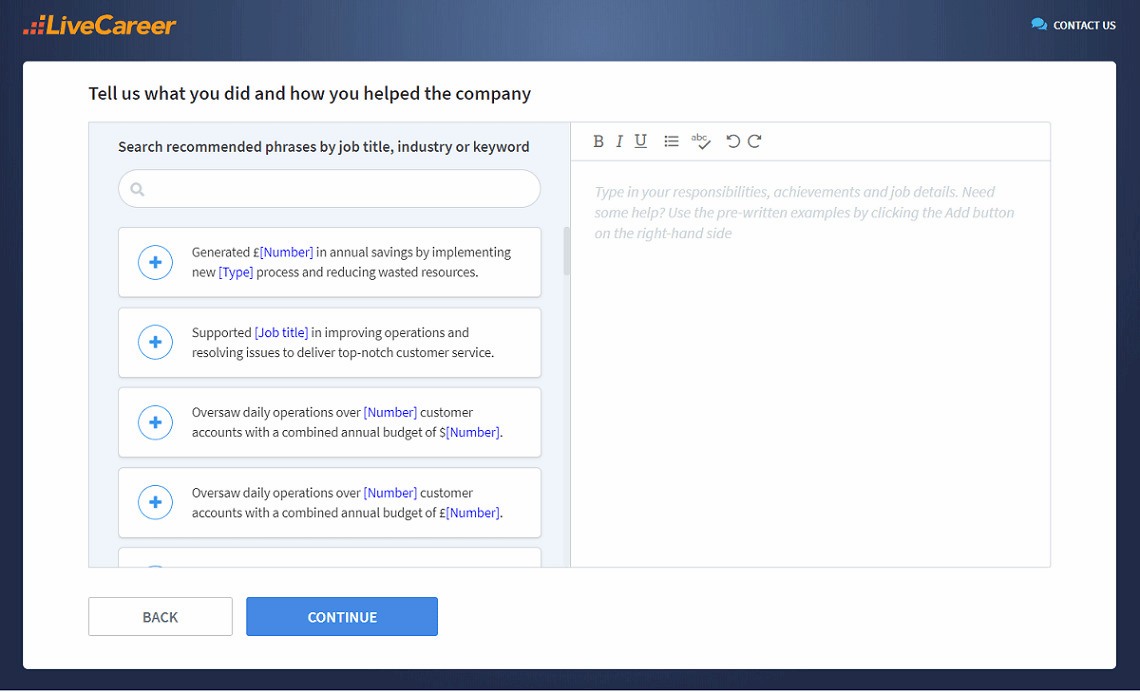
I hope this article has given you a good understanding of how to structure a CV. It’s not rocket surgery but that doesn’t mean it’s not easy to get wrong. Is there anything here you’d like more information on? Please let us know in the comments section below, and anything else you’d like to share.
Our editorial team has reviewed this article for compliance with LiveCareer’s editorial guidelines. It’s to ensure that our expert advice and recommendations are consistent across all our career guides and align with current CV and cover letter writing standards and trends. We’re trusted by over 10 million job seekers, supporting them on their way to finding their dream job. Each article is preceded by research and scrutiny to ensure our content responds to current market trends and demand.
Category: CV Help
Crafting a job-winning CV is all about showcasing your unique skills and experiences. Start with a strong personal statement that highlights your career goals and achievements.
Try Our CV Builder Now